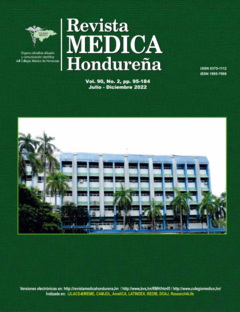Narrative review of generalities of the genus Leptospira and its virulence factors associated with renal pathophysiology
DOI:
https://doi.org/10.5377/rmh.v90i2.15201Palavras-chave:
Kidney failure, Leptospira, Leptospirosis, Pathogenesis, Virulence factors.Resumo
Worldwide, leptospirosis is the most highly prevalent zoonosis. Although the wide range of clinical manifestations of leptospirosis in humans is well-documented, knowledge of the mechanisms through which this pathogen causes kidney disease remains limited. This narrative review of the scientific literature presents experimental studies of pathophysiology and kidney disease in leptospirosis, both in humans and animals, and the results show that virulence factors are involved in kidney damage by inducing interstitial tubular nephritis, which is the most frequent pathological manifestation, additionally, to the acute non-oliguric renal lesion with hypokalemia, and loss of magnesium and sodium. Finally, it is concluded that in leptospirosis, the initial lesion in the kidney is caused by damage to the cell membrane of the proximal tubular region cells by pathogenic Leptospira virulence factors, thus exacerbating the immune response.
Downloads
371
Downloads
Publicado
Como Citar
Edição
Seção
Licença
Copyright (c) 2022 El autor

Este trabalho está licenciado sob uma licença Creative Commons Attribution 4.0 International License.




